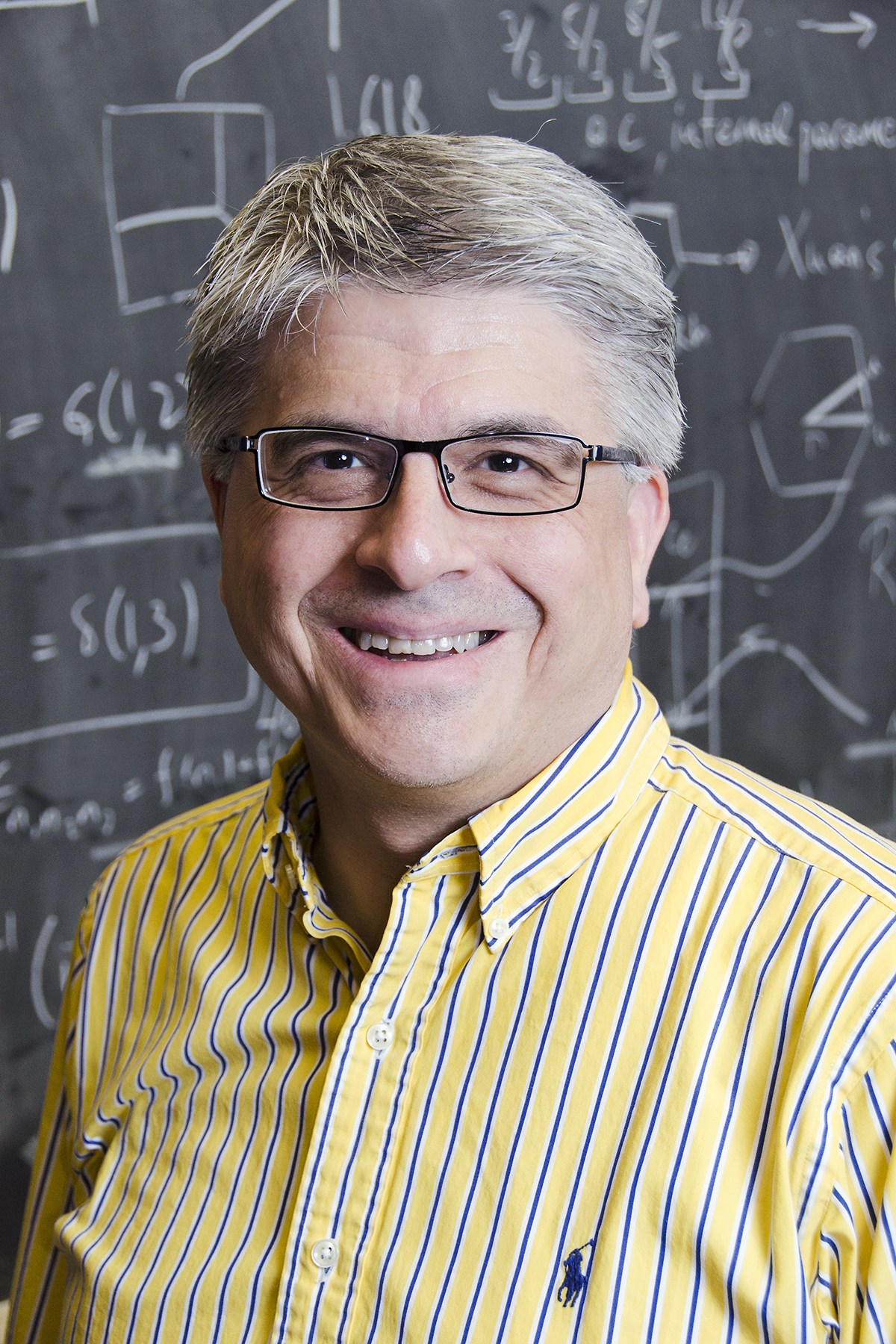The power of collaboration in a solitary field
The University Scholar award, now in its 30th year, honors UIC faculty who are among the best in their fields — those who show superior performance and great promise in research and teaching. Winners receive $15,000 per year for three years.

“I like to keep my feet on solid ground,” says physics professor Serdar Ogut. Photo: Joshua Clark/UIC Photo Services
“My research lies at the boundary of materials science, physics, a little chemistry, a tiny bit of engineering,” says physics professor Serdar Ogut.
Ogut’s research is related to energy and materials — trying to find better ways of harvesting and storing energy.
“I do two separate things,” Ogut says. First, he develops methods to understand the very small materials called nanostructures. Most of what we know about materials that we can see and touch doesn’t apply to the nanoscale, he says, and you need powerful computational methods to understand it.
“At that scale quantum mechanic affects are very important so you have to do a very detailed analysis to predict a material’s properties.”
He also studies larger-scale materials and the interesting properties that arise from their interfaces, imperfections, impurities and flaws.
Although it sounds like a very theoretical, very solitary occupation, the power of Ogut’s research comes from collaboration. This is a good time for computational materials science, he says, because other people recognize that using fundamental properties to guide experiments helps avoid dead ends.
When asked to explain the connection between a basic science problem and the real world, “I don’t have to work very hard,” Ogut says. He prefers to tackle everyday problems rather than exotic materials. “I like to keep my feet on solid ground.”
For example, Ogut is working Robert Klie, an experimental physicist down the hall. Klie was interested in a material called calcium cobaltite and their conversations got Ogut interested, too. Two published articles have already emerged from their collaboration.
Calcium cobaltite is relatively cheap and nontoxic: just calcium, cobalt and oxygen. But it shows promise for turning waste heat into electricity, Ogut says, because it has two different subsystems — one a good electrical conductor, the other a thermal insulator.
Early in Ogut’s career, he got a number of job offers from industry. He was recently married and the money sounded good, but, his wife said, “I think you want to be in a university environment, because you love teaching.”
Like all new professors, Ogut taught 100-level courses his first years. He loved it.
“I worked really hard on that course and lost 10 pounds,” he says. “I told my next class that I expected them to make me work hard enough to lose weight.”
